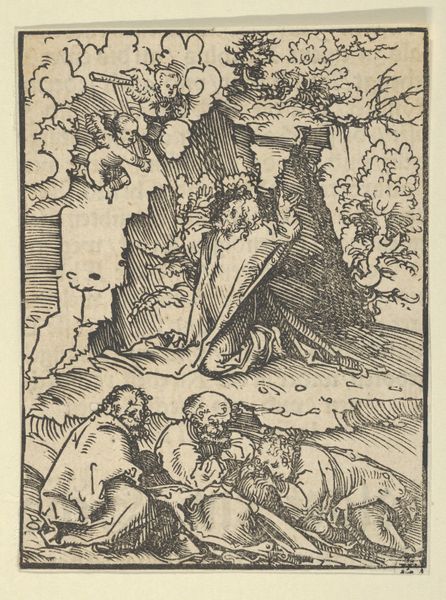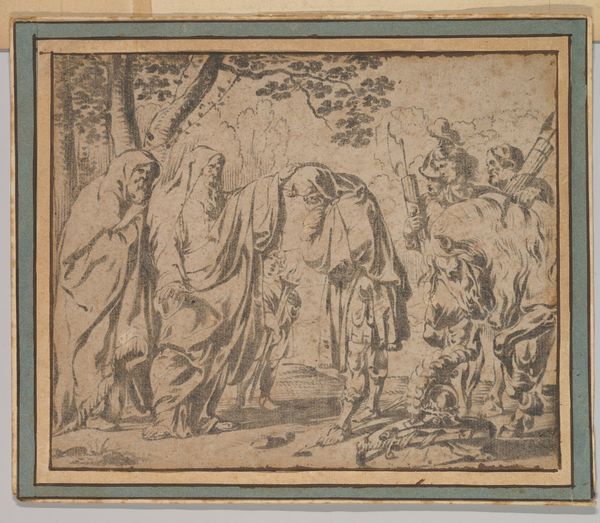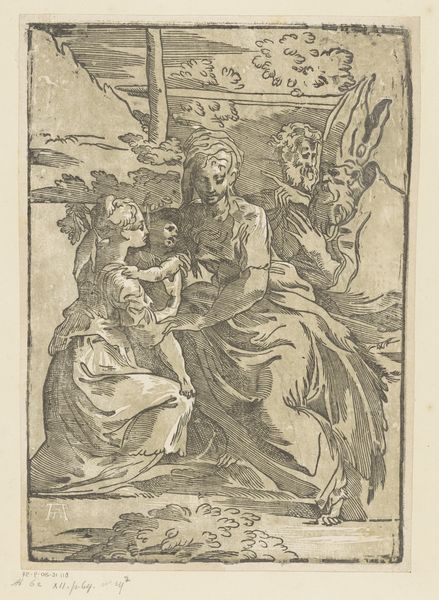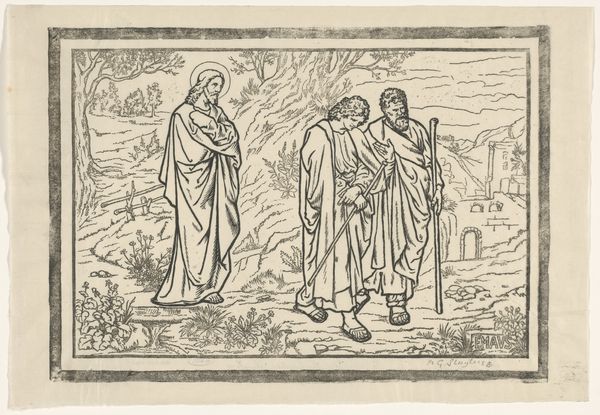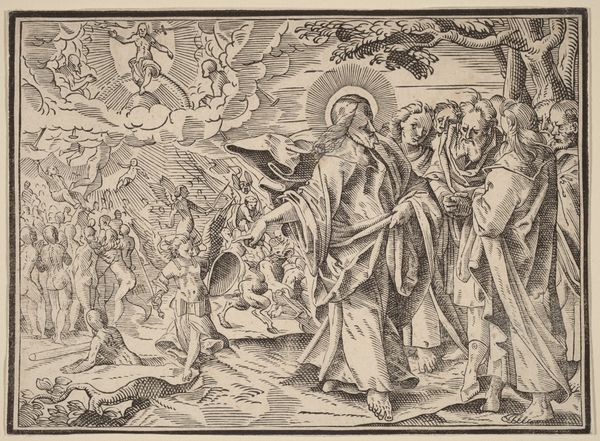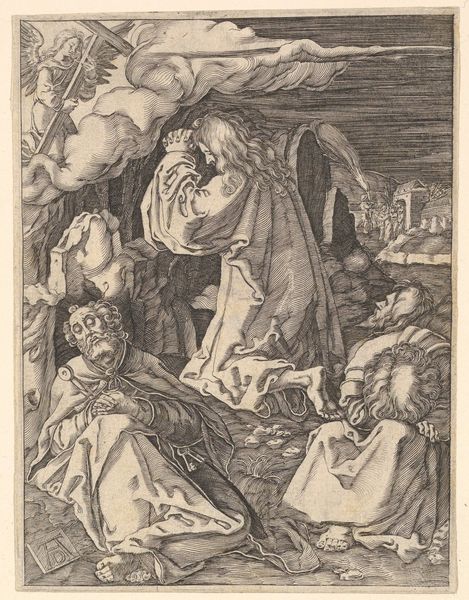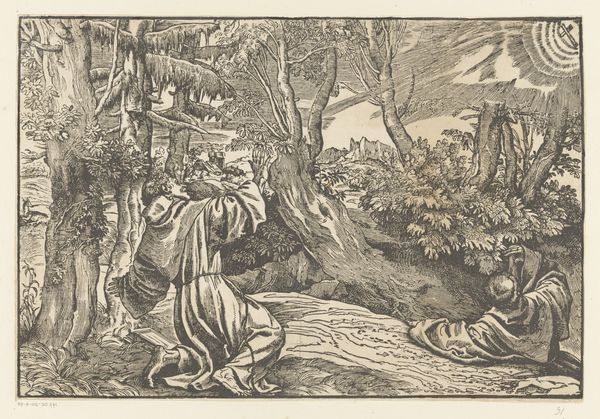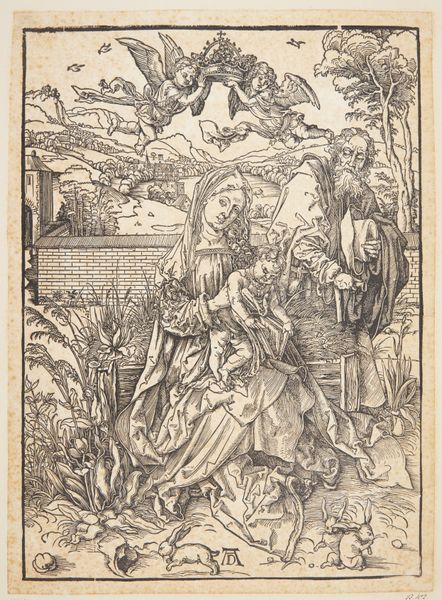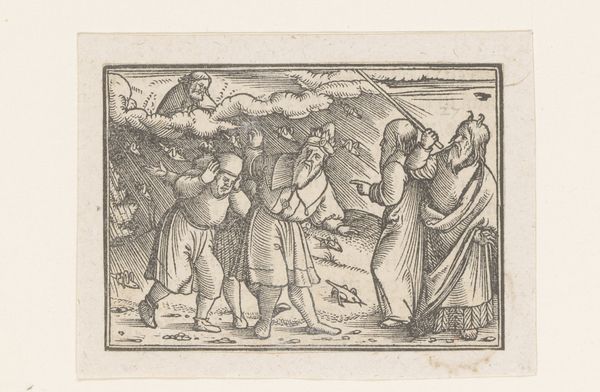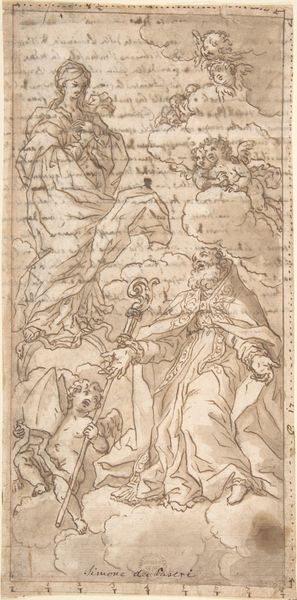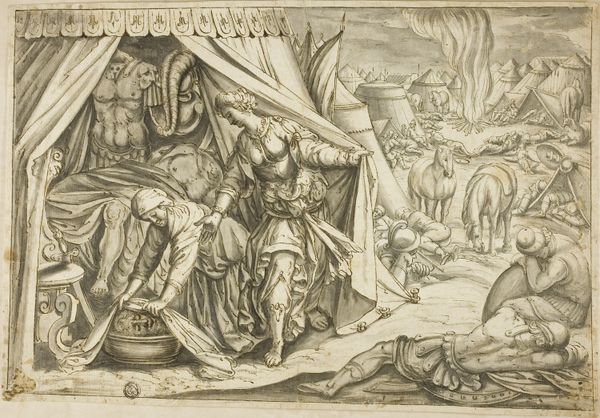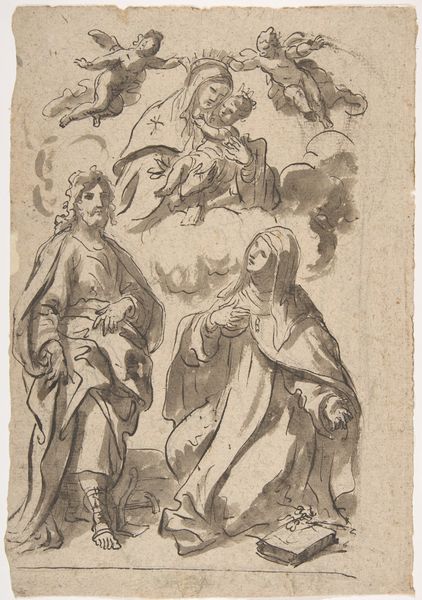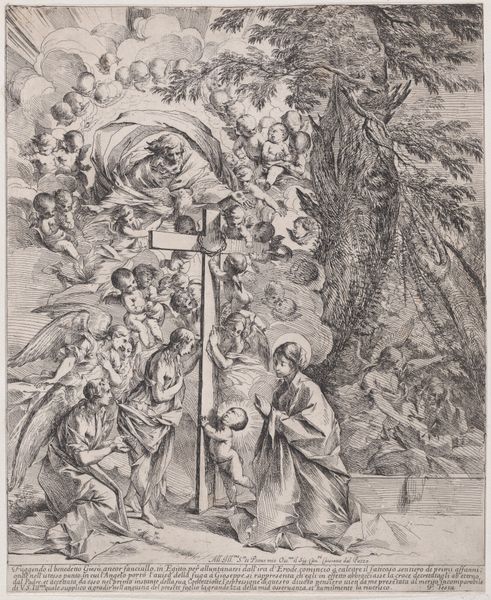
Dante and Virgil with the Vision of Beatrice 1481
0:00
0:00
drawing, print, ink, engraving
#
drawing
#
narrative-art
# print
#
figuration
#
ink
#
line
#
history-painting
#
italian-renaissance
#
engraving
Dimensions: 3 11/16 x 6 3/4 in. (9.37 x 17.15 cm) (image)
Copyright: Public Domain
Curator: Take a moment to observe "Dante and Virgil with the Vision of Beatrice," an engraving attributed to Baccio Baldini from around 1481. It’s part of the Minneapolis Institute of Art’s collection. Editor: Woah, a dreamscape in stark lines. There's an ethereal, floating figure, all surrounded by this kind of raw, etched world. Feels both sacred and a little unsettling, doesn’t it? Curator: Precisely. Notice the dominant use of line to create form and space. Baldini employed hatching and cross-hatching techniques, creating tonal variation within a fundamentally linear composition. How do you read the symbolism at play? Editor: For me, it’s about thresholds. You've got Dante and Virgil on a journey, seeing Beatrice as this vision...almost like a doorway opening into another reality. I also see those rocks as like primal building blocks for something about to become a thing in their minds. Curator: Yes, this depiction relates to Dante's *Divine Comedy*, placing specific emphasis on the poet and his guide experiencing a theophany, if you will. Note how the engraver rendered Beatrice, seemingly radiating light—almost architecturally framing them, dividing realms through form alone. Editor: The framing feels deliberate and strong. Maybe to force the viewer’s perspective toward the subject matter? It also makes me wonder: Baldini has caught this visionary instant so concisely with print; that seems wild for its era, what was reception like then? Curator: Well, consider the printmaking context. This would be one of many iterations produced using copper-plate engraving, a process that allowed wider dissemination of religious and classical narratives to new audiences during the Early Renaissance. As such we get a direct link to the revival of classical forms and thinking during the period! Editor: Makes me want to experience it for real now! All the talk about perspective, printing technology… I like to image my own ideal space. Baldini made a pretty excellent version of that for me to go and seek on my own… Thank you. Curator: A fruitful interpretation. The enduring resonance lies perhaps in its formal simplicity, a powerful rendering accessible to a range of intellectual and aesthetic sensitivities across eras.
Comments
minneapolisinstituteofart almost 2 years ago
⋮
Dante’s Divine Comedy (c. 1304-1321) was the first poem to be written in Italian, and it consecrated the vernacular as the official language in Italy. It is the story of the poet’s imaginary journey through the realm of the Dead, divided into Hell, Purgatory and Paradise, according to the Christian religion. Dante’s guide in the first two parts of the Divine Comedy is the poet Virgil, replaced by Beatrice in the Paradise. Beatrice, who died in 1290, was the woman Dante loved and celebrated in his verses. Her image as a pure, angelic creature followed the literary tradition of the “Stil Novo,” a poetic movement born in the second half of the 13th century. All the “Stil Novo” poets, including Dante, celebrated their own lovesickness along with the spiritual qualities and virtues of their beloved women. The engraving shows the moment when Dante enters Hell (“Per me” [Through me] are the two first words of the inscription on Hell’s door in the poem). Virgil is called by Beatrice, who appears floating in Heaven, to guide him. The plan to illustrate the Divine Comedy with one hundred prints after drawings by Sandro Botticelli failed in 1481 for technical reasons, and only nineteen plates were actually produced.
Join the conversation
Join millions of artists and users on Artera today and experience the ultimate creative platform.
